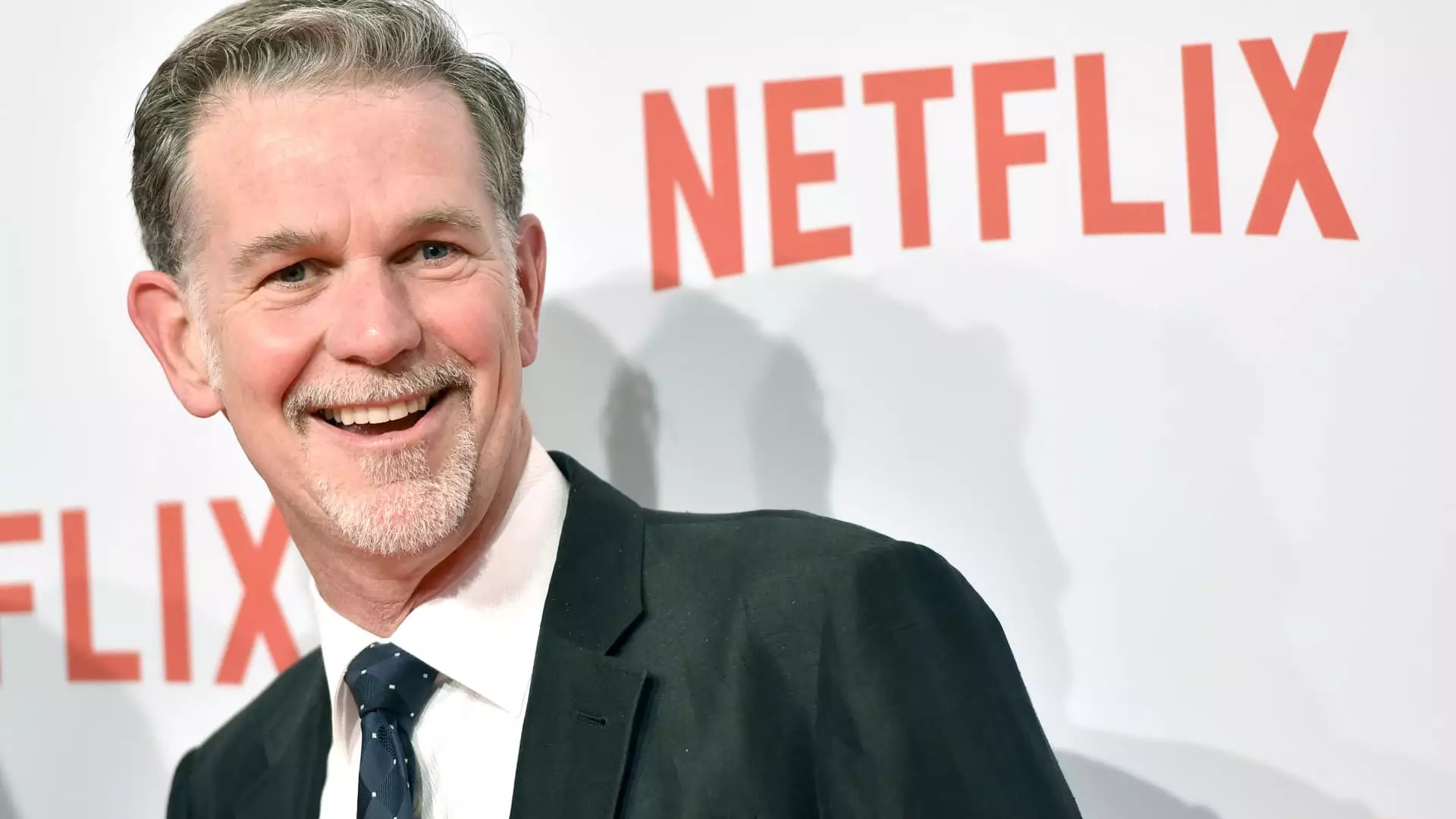Netflix, a major player in the media streaming industry, experienced a notable surge in its stock price, climbing 11% in early trading on Friday following the release of its third-quarter earnings report. The streaming giant exceeded Wall Street expectations with its performance during the period ending September 30, reporting earnings per share (EPS) of $5.40, eclipsing the anticipated EPS of $5.12 set by LSEG. Additionally, Netflix generated revenues of $9.83 billion, surpassing the analyst forecast of $9.77 billion. These results not only signify a strong quarterly performance but also point toward the company’s effective strategies in adapting to market demands.
A crucial factor contributing to Netflix’s success is the growth within its ad-supported membership tier, which saw a remarkable 35% increase quarter over quarter. This is significant, as it indicates a shifting revenue model in an era increasingly reliant on diversified income sources. Despite the initial skepticism regarding ad revenues, Netflix forecasts that this aspect of their business will not become a primary growth driver until 2026. Nonetheless, it is already making a profound impact, accounting for over half of new sign-ups in regions where the ad-supported option is available. This strategic pivot demonstrates Netflix’s ability to innovate amid challenges faced by competitors in the streaming sector.
Alongside advertising, Netflix continues to place a strong emphasis on content production. Industry analysts, including Richard Broughton from Ampere Analysis, suggest that Netflix’s commitment to investing in original programming has set the company apart in a difficult media landscape marked by cutbacks in content spending by many of its rivals. This proactive approach positions Netflix favorably to capture a larger share of the burgeoning global series market.
Looking ahead, Netflix shared a robust outlook for the fourth quarter, anticipating a revenue increase of 14.7%, totaling an expected $10.13 billion. This optimistic forecast was well-received by market analysts, with Citi analysts remarking that both the fourth-quarter guidance and the 2025 revenue expectations fell in line with consensus estimates. Their report indicates growing confidence among investors regarding Netflix’s trajectory, suggesting further stock appreciation may follow.
Furthermore, Netflix’s ambitious forecast includes revenue expectations ranging from $43 billion to $44 billion for 2025. This projection suggests a noteworthy growth rate of 11% to 13% from anticipated 2024 revenue, signifying a strong ongoing demand for its services and content offerings.
Richard Broughton emphasized the magnitude of Netflix’s investment in original scripted content, predicting that the platform could hold a substantial share of the global series market, potentially producing close to 10% of all new series next year. By focusing on diverse genres including drama, romance, and science fiction, Netflix is capitalizing on a range of viewer preferences, thereby reinforcing its status in the streaming ecosystem. This strategic content diversification will likely help maintain subscriber retention and attract new viewers amidst intense competition from new entrants and existing heavyweights in the industry.
Netflix’s third-quarter performance reinforces the notion that the company remains a resilient force within the turbulent media streaming landscape. Despite the broader industry’s struggles, Netflix has managed not only to grow but to redefine its approach through strategic adaptations in advertising and content creation. As the company prepares for the upcoming quarters, its commitment to innovation, combined with a strategic outlook for growth, establishes a robust foundation for continued success. The positive earnings report is therefore not merely a reflection of past success but signals a hopeful future for Netflix, promising exciting prospects for both the company and its subscribers. As the media landscape continues to evolve, Netflix’s ability to pivot and stay ahead of trends will ultimately determine its legacy in the streaming arena.


Leave a Reply